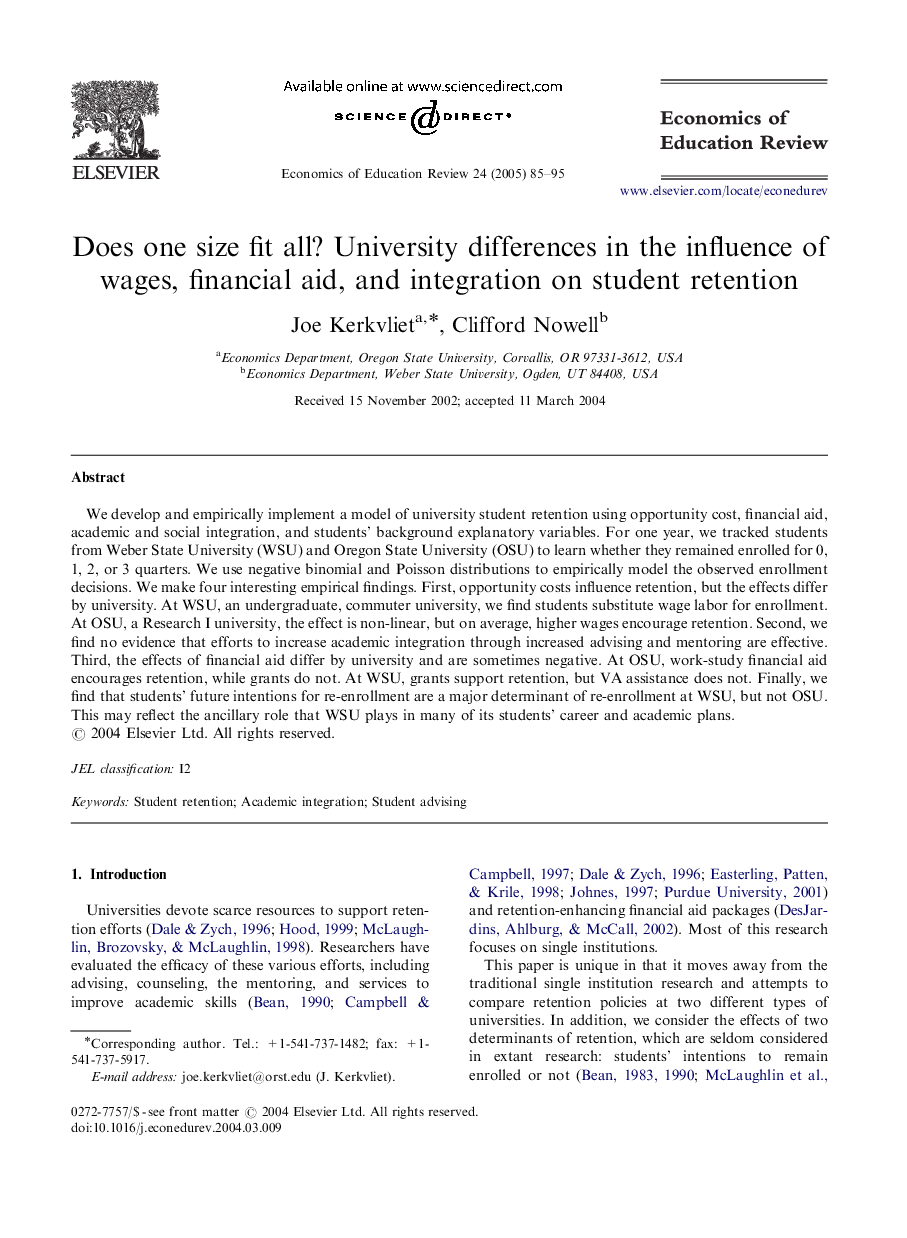| Article ID | Journal | Published Year | Pages | File Type |
|---|---|---|---|---|
| 9647762 | Economics of Education Review | 2005 | 11 Pages |
Abstract
We develop and empirically implement a model of university student retention using opportunity cost, financial aid, academic and social integration, and students' background explanatory variables. For one year, we tracked students from Weber State University (WSU) and Oregon State University (OSU) to learn whether they remained enrolled for 0, 1, 2, or 3 quarters. We use negative binomial and Poisson distributions to empirically model the observed enrollment decisions. We make four interesting empirical findings. First, opportunity costs influence retention, but the effects differ by university. At WSU, an undergraduate, commuter university, we find students substitute wage labor for enrollment. At OSU, a Research I university, the effect is non-linear, but on average, higher wages encourage retention. Second, we find no evidence that efforts to increase academic integration through increased advising and mentoring are effective. Third, the effects of financial aid differ by university and are sometimes negative. At OSU, work-study financial aid encourages retention, while grants do not. At WSU, grants support retention, but VA assistance does not. Finally, we find that students' future intentions for re-enrollment are a major determinant of re-enrollment at WSU, but not OSU. This may reflect the ancillary role that WSU plays in many of its students' career and academic plans.
Related Topics
Social Sciences and Humanities
Economics, Econometrics and Finance
Economics and Econometrics
Authors
Joe Kerkvliet, Clifford Nowell,
